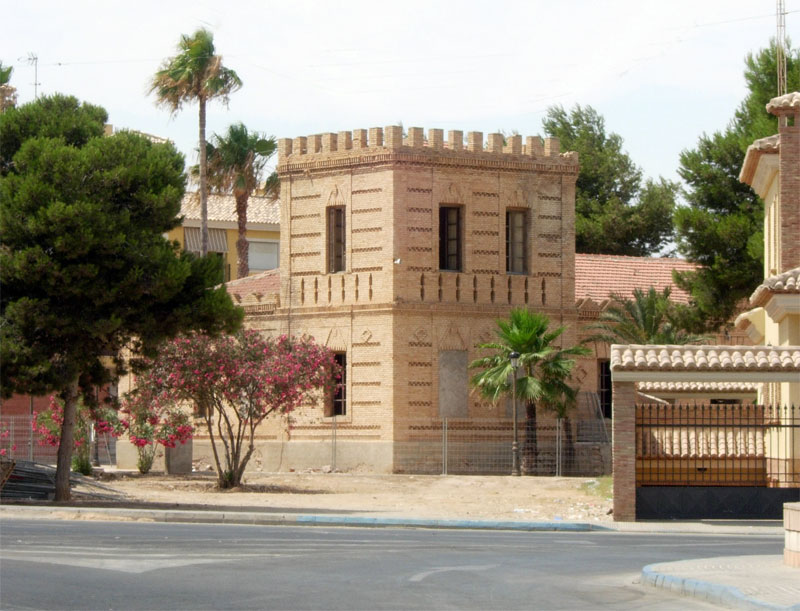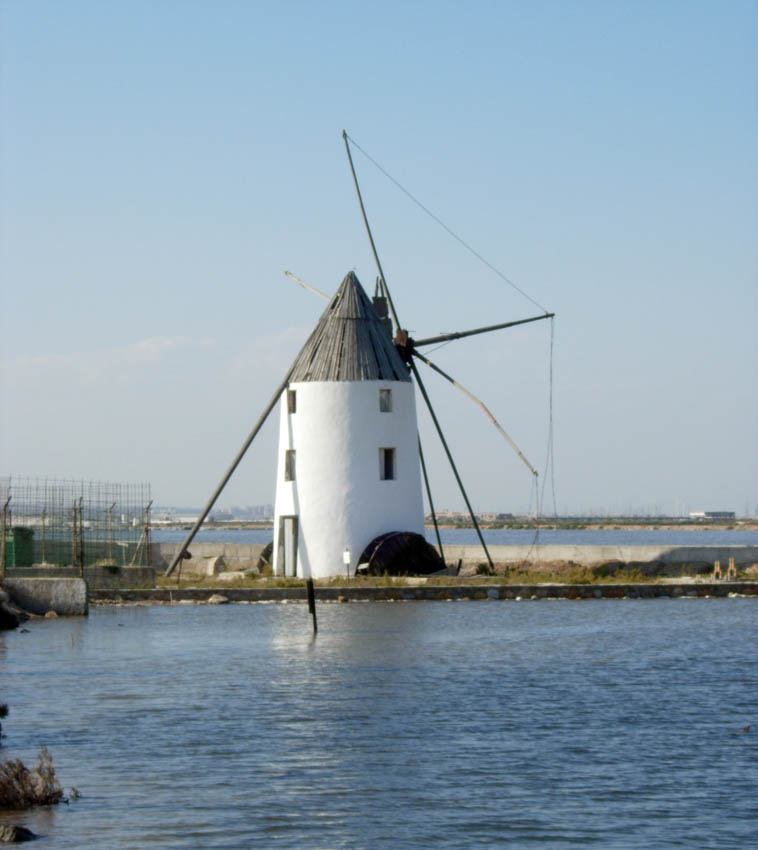San Pedro Del Pinatar, Spain on:
[Wikipedia]
[Google]
[Amazon]


 San Pedro del Pinatar is a small town and
San Pedro del Pinatar is a small town and
Local Government website
{{authority control Municipalities in the Region of Murcia


 San Pedro del Pinatar is a small town and
San Pedro del Pinatar is a small town and municipality
A municipality is usually a single administrative division having municipal corporation, corporate status and powers of self-government or jurisdiction as granted by national and regional laws to which it is subordinate.
The term ''municipality' ...
in the Region of Murcia
The Region of Murcia (, ; ; ) is an Autonomous communities of Spain, autonomous community of Spain located in the southeastern part of the Iberian Peninsula, on the Mediterranean Sea, Mediterranean coast. The region is in area and had a popul ...
, southeastern Spain
Spain, or the Kingdom of Spain, is a country in Southern Europe, Southern and Western Europe with territories in North Africa. Featuring the Punta de Tarifa, southernmost point of continental Europe, it is the largest country in Southern Eur ...
. The municipality is situated at the northern end of Murcia's Mediterranean
The Mediterranean Sea ( ) is a sea connected to the Atlantic Ocean, surrounded by the Mediterranean basin and almost completely enclosed by land: on the east by the Levant in West Asia, on the north by Anatolia in West Asia and Southern ...
coastline, the Costa Cálida
The Costa Cálida (, "Warm Coast") is the approximately 250 km stretch of Mediterranean coastline of the Spanish province of Murcia. This region has a micro-climate which features comparatively hot mean annual temperatures (and hence its n ...
, and borders the province of Alicante
Alicante (, , ; ; ; officially: / ) is a province located in eastern Spain, in the southern part of the Valencian Community. It is the second most populated Valencian province, containing the second and third biggest cities in the Valencian Co ...
. It has an area of almost 22 km2, and a population of 25,167 as of 2018.
History
Ancient history
San Pedro was an industrial territory whose salt mines were used by the Romans. They utilised the salt to produce an ancient Roman sauce calledgarum
Garum is a fermentation (food), fermented fish sauce that was used as a condiment in the cuisines of Phoenicia, Ancient Greek cuisine, ancient Greece, Ancient Roman cuisine, Rome, Carthage and later Byzantine cuisine, Byzantium. Liquamen is a si ...
.
Middle Ages
In 711 CE, Muslim civilizations started conquering the Iberian Peninsula. A few years later they dominated a great part of it, including the current San Pedro del Pinatar. During their occupation, they built fishing structures for a specific type of fishing which are known in Spanish as . In 1243, the king Muhammad Ibn Hud offered vassalage to theCrown of Castile
The Crown of Castile was a medieval polity in the Iberian Peninsula that formed in 1230 as a result of the third and definitive union of the crowns and, some decades later, the parliaments of the kingdoms of Kingdom of Castile, Castile and Kingd ...
. In April of that year, the Treaty of Alcaraz
The Treaty of Alcaraz was an agreement signed in Alcaraz, Albacete, Alcaraz around April 2, 1243, between Alfonso X of Castile, Alfonso of Castile – the future Alfonso X – acting on behalf of Ferdinand III of Castile, and several representativ ...
, in which the sovereignty of Castile was recognised, was signed. As a result, the former Taifa of Murcia
The Taifa of Murcia () was an Arab ''taifa'' of medieval Al-Andalus, in what is now southern Spain. It became independent as a ''taifa'' centered on the Moorish city of Murcia after the fall of the Umayyad Caliphate of Córdoba (11th century). ...
went under Castilian rule.
The jurisdiction of the (an administrative division of that era approximately equivalent to the municipality) occupies the territory. Pedro del Pinatar was part of the Crown of Castile but was on the border to the Crown of Aragon
The Crown of Aragon (, ) ;, ; ; . was a composite monarchy ruled by one king, originated by the dynastic union of the Kingdom of Aragon and the County of Barcelona (later Principality of Catalonia) and ended as a consequence of the War of the Sp ...
. The border, which crossed Campo de Cartagena
Campo de Cartagena is a natural region (comarca) located in the Region of Murcia, in Spain. For administrative purposes, it is also known as Comarca del Campo de Cartagena or Comarca de Cartagena. It is located in the southeast of the Iberian P ...
(a region that is categorised as a ''comarca
A ''comarca'' (, , , ) is a traditional region or local administrative division found in Portugal, Spain, and some of their former colonies, like Brazil, Nicaragua, and Panama. The term is derived from the term ''marca'', meaning a "march, mark ...
''), was decided in 1305. The , a book written in 1340, describes the municipality in the Late Middle Ages, describing the surrounding territory as a dense forest mass where wild boar were hunted. During this time, the town's population increased due to the arrival of many families.
Modern history
The localities of the municipality were set up at the beginning of the early modern period. The salt mines were utilised by the lessees who held rights on the mines at a similar level to the Crown. The institution awarded shares to these lessees in order to regain the power on the mines. The convenient access to the coastal salty lagoon of Mar Menor allowedBerber
Berber or Berbers may refer to:
Ethnic group
* Berbers, an ethnic group native to Northern Africa
* Berber languages, a family of Afro-Asiatic languages
Places
* Berber, Sudan, a town on the Nile
People with the surname
* Ady Berber (1913–196 ...
pirates to easily disembark, destroy the region and take the loot. In a letter dated to the 6 June 1592, Philip II of Spain
Philip II (21 May 152713 September 1598), sometimes known in Spain as Philip the Prudent (), was King of Spain from 1556, King of Portugal from 1580, and King of Naples and List of Sicilian monarchs, Sicily from 1554 until his death in 1598. He ...
wrote a letter in which he announced his intention to set up a tower as part of a defence system for the region. The tower was built in 1602, and it was armed with artillery and manned until the 18th century.
From War of the Spanish Succession
The War of the Spanish Succession was a European great power conflict fought between 1701 and 1714. The immediate cause was the death of the childless Charles II of Spain in November 1700, which led to a struggle for control of the Spanish E ...
(1700 to 1713), the people in the Reino of Murcia (an administrative division belonging to the Crown of Castile whose status was similar to an ordinary kingdom) allied with Philip V of Spain
Philip V (; 19 December 1683 – 9 July 1746) was List of Spanish monarchs, King of Spain from 1 November 1700 to 14 January 1724 and again from 6 September 1724 to his death in 1746. His total reign (45 years and 16 days) is the longest in the ...
. The supporters of the Charles VI, Holy Roman Emperor
Charles VI (; ; 1 October 1685 – 20 October 1740) was Holy Roman Emperor and ruler of the Austrian Habsburg monarchy from 1711 until his death, succeeding his elder brother, Joseph I, Holy Roman Emperor, Joseph I. He unsuccessfully War of ...
, attacked Cartagena, its port and the region related to Mar Menor in 1706.
During the last years of the early modern period, there were fewer privateer attacks; as a result, there was an economic rise and an increase in population. The municipal registers, in regards to population, stated that the number of inhabitants doubled in the last years of the 18th century (1771–1798).
The town was affected by the earthquake of 1829 but not by the cholera epidemic that struck the region in the 19th century.
During the Trienio Liberal
The , () or Three Liberal Years, was a period of three years in Spain between 1820 and 1823 when a liberal government ruled Spain after a military uprising in January 1820 by the lieutenant-colonel Rafael del Riego against the absolutist rule ...
(1820–1823) and taking advantage of the just-arrived liberalism, the people formed a local government, but after 1823, when the political system corresponding to the previous politic regime was instituted, the local government was eliminated and the territory became part of the municipality of Murcia again. After the death of Ferdinand VII of Spain
Ferdinand VII (; 14 October 1784 – 29 September 1833) was Monarchy of Spain, King of Spain during the early 19th century. He reigned briefly in 1808 and then again from 1813 to his death in 1833. Before 1813 he was known as ''el Deseado'' (t ...
, liberalism was reestablished and San Pedro achieved its own local government again on 16 September 1836.
Coastal customs were set in San Pedro del Pinatar in 1857. In 1869, a law which eliminated the monopoly of the salty mines was presented. The inhabitants of the municipality relied on fishing and agriculture for their economy. Land-related activity was hindered because of a lack of lands and drought. There were attempts to attenuate these obstacles that consisted of lifting the water by waterwheels and water mills. The salt mines were among the main economic sources. Some of them were built to decant the water from Mar Menor, and a few are preserved today.
Present
In the 1960s tourism to the municipality increased and led to a rise in economy, and the appearance of construction and service-related jobs. There was an increase in population resulting from the improve of standard of living; in 1971 there were 6,637 people living in San Pedro, and 20 years after the town's population consisted of 13,000 inhabitants.Demography and administrative divisions
The 24,093 inhabitants of San Pedro del Pinatar are distributed in the following districts: * San Pedro del Pinatar: 10,491 * Lo Pagán: 2,907 * Los Peñascos: 1,594 * Los Sáez: 1,499 * Las Esperanzas: 1,454 * Los Antolinos: 1,238 * Loma de Abajo: 786 * Los Tárragas: 750 * Los Imbernones: 329 * El Mojón: 236 * Los Veras: 211 * Loma de Arriba: 192 * Las Beatas: 104 * Los Gómez: 79 * Las Pachecas: 37 * Las Salinas: 5Culture
Every year on July 16 a naval procession in honour of theVirgin of Carmel
Our Lady of Mount Carmel, or Virgin of Carmel, is a Roman Catholic title of the Blessed Virgin Mary venerated as patroness of the Carmelite Order.
The first Carmelites were Christian hermits living on Mount Carmel in the Holy Land during the la ...
takes place in which her image is taken upon boats, boats are blessed and those that died at sea commemorated. This tradition goes back to the 18th century.See also
*List of municipalities in the Region of Murcia
This is a list of the 45 municipalities in the province and autonomous community of Murcia, Spain, with their land areas and their populations at the Censuses of 2001, 2011 and 2021. List
See also
*Geography of Spain
*List of cities in Spain
R ...
Others links
* Salinas y Arenales de San Pedro del PinatarReferences
External links
Local Government website
{{authority control Municipalities in the Region of Murcia